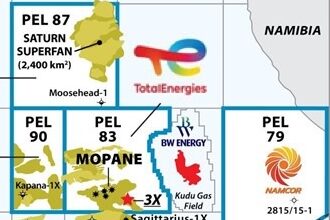Optimism strong despite market uncertainties
Industry continues focus on fleet upgrades, oil/liquids-rich assets going into 2013
By Katherine Scott, editorial coordinator
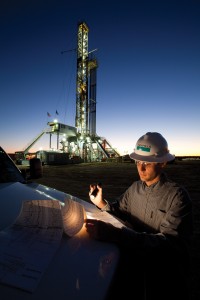
Trumpets or fireworks may be absent in celebrating substantial industry growth as 2012 concludes, but that’s no matter. Over the past 12 months, industry solidified its footing after facing significant regulatory and economical challenges over the previous couple of years. And although industry is ending the year with a slowdown in available rig work, strong oil prices remain a welcome sign for a positive outlook for 2013.
“Right now we’ve gone down in rig utilization. There’s no doubt. The numbers substantiate that for the whole industry,” John Cromling, executive vice president for Unit Drilling, said. “But I think it’s a short-lived downturn, and I think 2013 is going to be good.”
Earlier this year, Drilling Contractor reported in its March/April issue of high rig utilization, rising dayrates and a general market boom in US land drilling. Since then, however, the market has lost some steam. Operators reevaluated budgets against natural gas prices and seemingly softening oil prices, and the call for drilling rigs weakened. As a result, contractors have seen their business slow and expect it to stay that way through the end of the calendar year.
“In the late June time frame, WTI oil prices dipped just very briefly below $80 a barrel. That was a bit of a wakeup call for everybody. Budgets were scrutinized and operators recognized that if they maintained current rig activity, they were going to outspend their budget, so some rigs were released,” John Lindsay, president and COO of Helmerich & Payne, said.
The transition from dry gas plays to liquids-rich in the US endured, however. Growth potential in key areas such as the Eagle Ford, the Permian Basin and emerging plays like Ohio’s Utica Basin have garnered a confident picture of 2013.
“There’s a huge disparity between oil and gas prices, and our view is that we’ll be in a lower gas price world for longer,” Stephen Campbell, vice president of investor relations for Newfield Exploration, said. “For next year, I see a continuation of the same theme where all the money is going into oil and liquids-rich plays.”
However, amid a general optimistic attitude for 2013, an industrywide feeling of uncertainty remains – uncertainty in the global economy, uncertainty in global and regional politics, and uncertainty in the global market. Although oil prices remain relatively high at about US $85/bbl to $95/bbl, natural gas prices continue to hover around $3/mcf to $3.50/mcf, causing some to wonder if such continued weak pricing may lead to a repeat of the 2008 downturn.
Helmerich & Payne, Unit Drilling, Trinidad Drilling, Pioneer Natural Resources and Newfield Exploration capture their experiences of 2012 and general outlook for 2013.
Helmerich & Payne
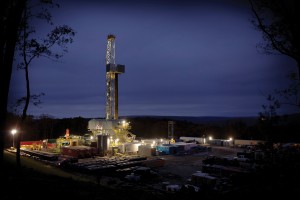
In 2012, the migration that began more than a year ago from the drier gas basins to liquids-rich plays in the US continued, with some companies moving operations completely to basins and plays such as the Permian and the Bakken. Within that shift, however, is emerging a sub-trend toward higher-quality liquids.
“When we say ‘liquids-rich,’ it may range from a low percentage of liquids in one part of the basin to a high percentage of liquids in another part of the basin,” Mr Lindsay said. “What we’ve started seeing now are rigs transitioning from the lower end of the natural gas liquids to black oil basins or higher-quality oil and liquids. Customers are looking to target the commodity that’s going to bring them the highest prices per barrel.”
Customers also are looking for the highly efficient AC-drive rigs, he said. H&P estimates that there were approximately 1,750 land rigs working in the US as of late September, and only 30% are AC-drive rigs, compared with 31% SCR and 39% mechanical rigs. “Many of the rigs that are available are not the rigs that customers want,” Mr Lindsay said. “We continue to see this sideways to slightly down transitioning of the rig count because customers are high-grading their rig fleets. Some of the older, less efficient, less safe rigs are continuing to stack, and this replacement is not a ‘one for one’ trade.”
When asked about the outlook for 2013, he added: “At the first of the year, if the WTI oil price remains in the $80/bbl to $95/bbl range, then activity should improve, and the best rigs, the AC rigs, are going to be snatched up first. … Those rigs should also be able to continue to command a performance premium in the marketplace, assuming the commodity prices hold.”
The H&P fleet, supported by its advanced-technology FlexRigs, has approximately 236 of its 285 US drilling units in operation; the rigs are predominately 1,500-hp, AC-drive rigs that typically target a range of 14,000- to 22,000-ft drilling depths. The Eagle Ford is the most active basin for the company, where approximately 90 of the company’s rigs are employed and where Mr Lindsay predicts another strong market in the coming year.
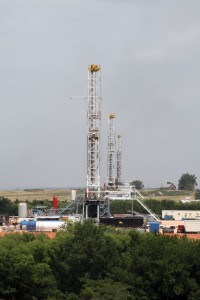
The company also has 17 newbuilds under way that will be delivered at a pace of about four rigs a month until the end of 2012, followed by four rigs to be delivered in Q1 2013. All will be AC-drive FlexRigs built against term contracts of three to five years. Twelve rigs are going to the Eagle Ford shale, three will be sent to the Permian Basin, one is going to the Fayetteville shale and one will go to the Bakken. Outside the US, H&P also has 16 FlexRigs operating across Colombia, Argentina, Bahrain, Abu Dhabi and Tunisia.
Looking toward the industry’s growth potential in 2013, Mr Lindsay commented that marketplace uncertainty is likely to remain a lingering concern and may impact drilling budgets. “Companies are going to be less likely to invest and have more aggressive drilling budgets. A global economic slowdown is going to reduce the demand for oil and gas products, which is going to have a negative influence on price. In turn, that’s going to decrease the number of wells drilled,” he said. Still, he urged, the industry can’t simply stop spending money. “You’ve got to be prepared to spend through the ups and downs. Downturns are opportunities for companies to prepare for the next up cycle.”
Unit Drilling
Of all US onshore wells being drilled, it’s believed that approximately three-fourths are now horizontal. It’s therefore no surprise that Unit Drilling has seen a high 85% utilization rate of its 1,000- to 1,700-hp rigs, which are typically best suited for horizontal wells. “That’s what is the most popular by far,” Mr Cromling said. And, yet, he points out that the classification of rigs by horsepower is “almost a meaningless number anymore with horizontal drilling.” Mr Cromling believes that with the right mud pumps, top drive and pit system, the rig’s horsepower rating can become insignificant because “the pit system and pumps are key to
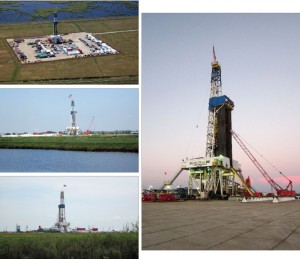
how you drill a horizontal well.”
Lower-horsepower rigs, in the range of 700 hp to 900 hp, are beginning to find increased use in emerging marketplaces, he continued. Recent finds in the Mississippian play in north Oklahoma and southern Kansas, in particular, have increased the drilling of shallow horizontal wells. “This trend toward shallower horizontal wells really hasn’t even reached its full potential,” Mr Cromling said. “Who knows how many more of these shallow plays there could be? There’s a lot of old producing areas that have not been drilled horizontally that lend themselves to be good candidates.”
He believes that, due to the size of the geological area of the finds, the shallow horizontal drilling trend could last for the next decade. “You’re not talking about a little pod somewhere. You’re talking about hundreds and hundreds of square miles of geographic area, so your potential for a high number of wells is great.”
To drill these massive numbers of horizontal wells, contractors have honed in on high-specification rigs, pushing industrywide drilling efficiency to the best it’s ever been, Mr Cromling believes. In turn, this means that fewer rigs are needed to drill the same footage.
This year alone, Unit upgraded and refurbished 10 rigs with top drives, more horsepower and new pumps. “If we hadn’t refurbished those rigs, they probably wouldn’t be working. That’s how critical it is,” Mr Cromling said. Going forward, he believes horizontal drilling will continue to drive a large number of additional pump and mud system upgrades.
Similarly, upgrading their rig fleet to bi-fuel systems, Unit has expanded the efficiency of its rigs by allowing them to predominately run on natural gas when available and practical. “Using natural gas today is the best fuel you can use; it’s the cheapest, the cleanest and the most available.”
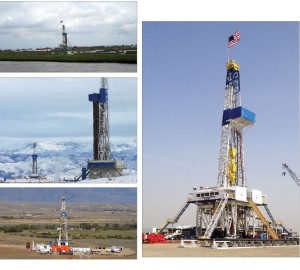
Still, although upgrading rigs can support higher rig utilization numbers for contractors, overall contract length and dayrates have come down for the industry, Mr Cromling said, adding that it’s primarily newbuild rigs that are securing long-term contracts these days. Because the current marketplace is weak, operators have their choice of rigs. “If they don’t have to make a long-term commitment to get a rig, then they’re not going to,” he said. “The market needs to pick up a lot in 2013 to where operators feel like prices are trending upward. Then they’ll be receptive to locking in for a longer time period.” And with the downward trend in activity, dayrates too have followed, he said. “It’s just a fact of life.”
New areas of activity do continue to pop up in the US, Mr Cromling said, such as Ohio’s Utica play. However, instead of creating a whole new marketplace for rigs, operators tend to move rigs from one play to another, such as from the Marcellus to the Utica. “The Permian’s still hot, the Eagle Ford’s still hot, but it’s not adding a greater number of rigs. They just move from one place to another, which is not bad, but it’s not as exciting as if we’d gone from 2,000 rigs to 2,500 rigs,” he said.
Unit is most active in the Bakken, the Mississippian play, western Oklahoma and the Texas Panhandle, with 127 US land rigs that are being operated at 56% utilization. The company also added three 1,500-hp newbuilds this year. One deployed in May to North Dakota on a three-year contract with Kodiak while the other two were delivered in January and May for a three-year contract with QEP in Wyoming.
Trinidad Drilling

For Trinidad Drilling, one of the biggest lessons learned from the 2008 downturn was the benefits of take-or-pay contracts, “where a rig is contracted, generally a newly constructed built-for-purpose style rig, for a guaranteed number of days per year at a set dayrate based on the total number of years they’re willing to commit to the rig,” Lyle Whitmarsh, CEO of Trinidad Drilling, said. In the fickle drilling market, contractors like Trinidad have increasingly sought out these types of contracts to guarantee returns on investment for newbuild rigs.
“Because we have take-or-pay style contracts, we’re not having to react to short-term spikes,” Mr Whitmarsh said. “Our rigs are continually working; 60% of our fleet is on long-term contract.”
Still, although term contracts are helping Trinidad to manage the spikes and valleys of commodity prices swings, Mr Whitmarsh acknowledges that these ups and downs will continue to challenge his company as well as the overall industry over the coming year. A firm market rebound in 2013 will be directly dependent on stability in commodity pricing, he believes.
Besides leveraging take-or-pay contracts, Trinidad also has designed its fleet to be able to move between a number of plays and react quickly to shifts in operator budgets. “As we move into 2013, we want to be able to respond and assist our customers when the global economy puts pressure on their operations,” Mr Whitmarsh said. Of its total fleet of 129 land drilling rigs in the United States, Canada and Mexico, approximately 85% to 90% are drilling for oil or liquids-rich natural gas, and the highest number of them are in the Eagle Ford, with 20 rigs.
“It would take a fairly fundamental shift in gas commodity pricing to see an incremental number of drilling rigs move back to the gas side,” he said.
In 2012, Trinidad constructed four newbuilds, all built-for-purpose, AC-drive rigs ranging from 1,000-hp to 1,500-hp for Canadian operations. Mr Whitmarsh explained that Canada, in particular, has taken advantage of the pullback in US rig demand to push for more performance up north. “There seems to be more openness in Canada at this time for certain style of rigs. They’re getting themselves in a position where they can contract a newer-style rig to start capitalizing on their efficiencies.”
Trinidad also added a rig in April of this year to their Canadian operations where it is working in the oil sands near Fort McMurray in Alberta, drilling steam-assisted gravity drainage wells. The rig was designed in-house and built using a new moving system that allows the whole rig to move as a unit, Mr Whitmarsh said. In the past, rigs would get so far before trucks needed to be brought in to move the associated buildings, he said. Now the rig is limited only by the availability of solid, level ground on which to move the rig. “We have received expressions of interest from a number of customers for similar-style rigs to be used in both oil sands and other applications, including the Bakken.”
For 2013, Mr Whitmarsh also sees sustained interest in building new equipment, although the number of inquiries is at a lower level than 12 months ago. In particular, Trinidad sees opportunities for growth onshore Mexico, where the company currently has three rigs operating. “That was off a high for us at seven rigs, so we’d like to add more rigs back in, either in the form of a newbuild, or it could be done in an upgrade,” Mr Whitmarsh said. “Overall, we believe there are still pockets in Mexico and North America that will allow Trinidad and the industry to add assets throughout 2013.”
Pioneer Natural Resources
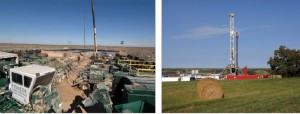
When it comes to E&P investment, Pioneer Natural Resources believes it’s best to drill what you know. The company recently sold the last of its non-US assets in order to concentrate efforts back into familiar terrain. Previously, Pioneer had drilling activity in places like South Africa, Argentina, Tunisia, Canada, Gabon, offshore Nigeria and offshore Gulf of Mexico but is now solely a US land company. “We went into deepwater and international exploration to try and grow the company because of perceived maturity in the US at the time, but since last year we have been returning to our roots,” Steve Mamerow, vice president – corporate drilling and completions for Pioneer, said.
Pioneer made the Eagle Ford, the Permian Basin, where it predominately operates in the Spraberry and Wolfcamp plays, and Alaska its focus areas for drilling in 2012. In the Eagle Ford, Pioneer is currently running 12 rigs and had up to 44 rigs working in the Permian Basin during 2012. The company has one rig in Alaska operating off of Oooguruk Island and earlier this year during the winter drilling season employed a second rig to target additional formations.
“One well we drilled turned out to be a nice discovery in a shallower horizontal well, so we we’re going to be doing additional appraisal work on that prospect this winter,” Mr Mamerow said. Both rigs were contracted from Nabors. Rig 19AC has been under contract for three years, which Pioneer recently extended for an additional two years plus two optional years. The second rig, 27E, is contracted to drill for 120 days this winter.
For 2013, Pioneer plans to retain the same focus areas as it continues to emphasize oil assets. “Where we are drilling now is where we are likely to spend the bulk of our capital in 2013 and beyond,” he said. “We expect to focus most of our capital spending in 2013 in the Permian Basin and the Eagle Ford, where we are able to deliver superior returns.”
As much of the industry has, healthy oil prices relative to weaker natural gas pricing has driven Pioneer to place a majority of its operations in the liquids-rich areas of the US for 2012. “Our objective is to spend within our cash flow,” Mr Mamerow said. “With current oil prices, our mix of liquids to gas has been a strong impetus for us to continue to focus our efforts on places where there are a lot of liquids.”
Fueled by strong returns and the desire to enhance the execution of its drilling program, Pioneer further expanded its vertical integration activities in 2012.
“We’re now basically the 13th-largest pressure-pumping company in North America. We’ve got over 300,000 horsepower of equipment, with most of it employed in the Spraberry and Eagle Ford areas,” Mr Mamerow said. The company also has 15 drilling rigs in the Permian Basin and other service equipment, such as pulling units, frac tanks, hot oilers and water trucks.
Newfield Exploration
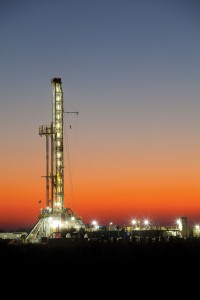
As horizontal drilling expands, operators are pushing lateral lengths out longer and longer with innovations in casing design, built-for-purpose rigs and higher ROPs. Newfield Exploration, for example, is averaging 11,000-ft laterals in North Dakota’s Williston Basin and drilling its first 10,000-ft lateral in the Eagle Ford. “That’s not just a Newfield success story; that’s an industry success story,” Mr Campbell said. “With the success of these extended laterals, you will continue to see the lateral length get pushed longer and longer. … Our industry is able to drill the same amount of hole each year with less rigs.”
For example, in 2010, Newfield averaged 45 days from spud-to-rig release in the Williston Basin. They improved that number to 35 days in 2011, but today are “routinely getting wells down in 21 days,” Mr Campbell said. “We’re able to drill more hole per rig with higher ROPs from the same rig fleet than we could a year or two ago.”
Falling in line with the industrywide move to liquids-rich plays, Newfield has not drilled a gas well in more than a year, Mr Campbell added. “We have completely stopped investing in dry gas plays. … You’d have to see a dramatic increase in gas price, as well as a dramatic drop in oil price, to make gas investments competitive again.”
Since August 2004, the company has invested heavily in Utah’s Uinta Basin, where they are running seven rigs with an estimated activity this year of approximately 300 wells. Newfield has referenced at least 6,000 potential drilling locations in the Uinta Basin over a decade-long period of activity. “The Uinta Basin has the deepest inventory of wells to drill over the next decade,” Mr Campbell said. “We allocated $550 million of our 2012 budget into Utah. It’s our largest oil asset in terms of reserves and production.”
Besides the Uinta Basin, Newfield’s focus areas for 2012 included the Mid-Continent’s Cana Woodford play, where the company allocated $300 million to a six-rig program, and the Williston Basin, where Newfield allocated $250 million to a three-rig program. Mr Campbell looks for these to remain large focus areas into 2013.
Newfield also has operations in Malaysia and China but holds its core assets on US land, recently selling its offshore Gulf of Mexico acreage and clarifying its role as an onshore US producer. “We’re producing a record 31,000 to 32,000 bbl/day in Malaysia, but I would not look for us to add additional areas in the international arena. Our plate is pretty full today with the existing inventory we have in the US,” Mr Campbell said.
On the regulatory side, Mr Campbell notes that challenges remain on the state and federal levels. It can take Newfield upwards of nine months to get a permit to drill a well in Utah, where they operate on federally owned land, he said. “From an efficiency standpoint, if you start and stop a drilling program, you lose efficiencies with your crews and your rigs, and that’s critical in our operations.
“There needs to be lots of preplanning and an open dialogue with those federal agencies to ensure that they understand our needs going forward and we also understand their constraints in issuing permits so we can balance that out,” he said.
Looking back on 2012, Mr Campbell stressed the improvements industry has made in reversing a decades-long decline in oil in the US. “The Williston and the Eagle Ford are two plays that are really driving that reversal of a 30-year decline in the US,” he said. “And both of those basins still have significant growth in 2013 based on the activity and inventory of uncompleted wells today.”
More importantly, the reversal has stimulated the US economy. “For the first time, we’ve made a meaningful impact in the amount of oil that’s imported into the US everyday,” he said. “Nine percent of the jobs created over the last year were created in energy, so our energy business is making an impact on the broader economy by exploiting resources in the US today. We’re removing the roadblocks to growth.”
2012 industry snapshot by the numbers
- Helmerich & Payne is most active in the Eagle Ford, where it has approximately 90 rigs employed. H&P also has 17 newbuilds under way.
- Unit Drilling upgraded and refurbished 10 rigs this year. Of Unit’s fleet, 1,000- to 1,700-hp rigs have an 85% utilization rate.
- Approximately 85% to 90% of Trinidad’s land rigs are drilling for oil or liquids-rich natural gas. 60% of the fleet is on long-term contracts.
- Pioneer is the 13th-largest pressure-pumping company in North America, with more than 300,000 horsepower of fracturing equipment.
- Newfield is averaging 11,000-ft laterals in the Williston Basin and drilling its first 10,000-ft lateral in the Eagle Ford. The company has also reduced its average spud-to-rig release in the Williston Basin from 45 days in 2010 to 21 days in 2012.




